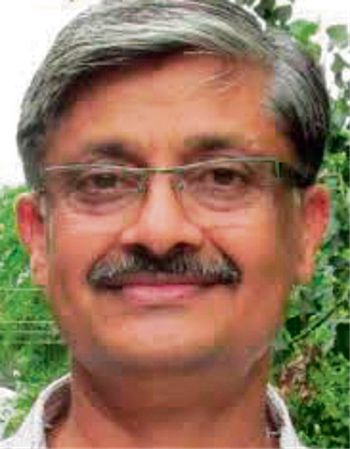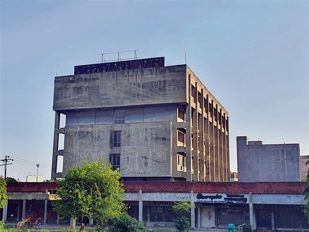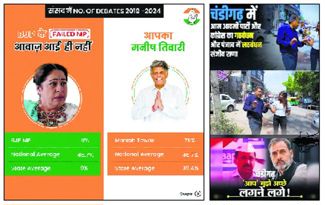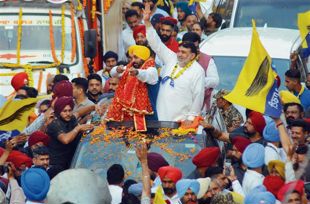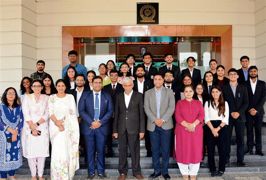
GROUND REALITY: Being a micro-entrepreneur doesn’t bring in as much income in India as working for someone else on a wage or salary does. PTI
M Rajivlochan
Historian
IN some 40 years of teaching postgraduate students, discussions with the passing-out classes have always veered towards their hopes and aspirations after they have completed their studies. Invariably, all of them hope to get regular government employment. The certainty of having a wage through their entire working life seems to be most attractive to them. Associated with this are unstated benefits of a government job, which come by way of access to good and cheap healthcare all through life, good housing at extremely subsidised rates and a belief that such a job provides an undefined access to power. The ones who could not land a government job often felt disheartened. At the same time, those who did get into government employment would frequently complain of being underpaid and not being as well-off as those who run their own businesses or are employed in the private sector. To make sense of these moans and groans from the young, we checked out the specific details about earnings that are available in the Periodic Labour Force Survey (PLFS) of people who work in different professions.
The PLFS has been carried out every year since 2017-18. It covers over 4,00,000 people in roughly 1,00,000 households every year. The over 4 lakh data points provide interesting insights into earnings by Indians. The first important point to note is that Indians overall earn very little. Just about 11 per cent earn enough to be able to pay income tax. Among those who do earn, about 57 per cent are self-employed, 21 per cent earn a wage or salary and 22 per cent earn episodically from casual labour. The number of those employed in government is a measly 9 per cent; 12 per cent are employed in the private sector. The average income of a salaried employee in India currently is about Rs 20,000. The average monthly income of someone self-employed is about Rs 13,347. Digging deeper into the data shows how this income varies across different income groups. Among the lowest three deciles of all earners, incomes from wage or salaried employment far outstrip income through self-employment. Simply put, being a micro-entrepreneur doesn’t bring in as much income in India as working for someone else on a wage or salary does.
Similarly, among the big earners, the ones who are part of the top two deciles of income earners in India, working for a salary usually brings in more income than does running a business. It is only in the two highly urbanised states of Delhi and Goa that those who are self-employed earn more than those who live off a salary. Broadly speaking, this means that for the bottom deciles where monthly income is in the range of Rs 4,000 to Rs 10,000, the salary earners make more money than the self-employed. For monthly incomes in the range of Rs 11,000 to Rs 25,000, it is the self-employed who earn more. And for monthly incomes above Rs 25,000 in general, it is the salary earners who earn more.
States of India show significant variations in the numbers. Punjab is the only state where the average earning of farmers is similar to that of those who are self-employed. In other states, farmers’ incomes are way less than the incomes of those who are either self-employed or working for a wage. In terms of quantity, the monthly middle income for farmers in Punjab (the value that divides the group into two equal halves) is Rs 15,000, which is the same as the middle income for others who are self-employed. In Punjab, traders on the whole earn more than farmers. Those among the lowest decile of income earners in the state — both salary earners and the self-employed — earn similar incomes. For the top three deciles, salary earners earn more than the self-employed. For monthly incomes between Rs 4,000 and Rs 22,000, those who are self-employed earn more money than wage or salary earners.
In Kerala, in the lowest two deciles and top three deciles, salary earners make more money than the self-employed. In the middle five deciles, the self-employed earn more.
In UTs like Puducherry and Ladakh, besides the north-eastern states, salary earners make more money across the board than the self-employed. In Manipur, wage or salary earners make more than the self-employed by over one-third. In Nagaland, wage or salary earners earn up to 55 per cent more than the self-employed. Only in the highest decile in Nagaland do the self-employed earn more. In Tamil Nadu — which is among the most urbanised and industrialised of states — for the lowest three deciles with incomes below Rs 14,000 per month and for the highest three deciles with incomes more than Rs 22,000 per month, it is the salary earners who make more than the self-employed. For the middle four deciles, the self-employed earn more. The median income that divides the values for self-employed into two halves is Rs 15,500. The self-employed, who are engaged in manufacturing activity, earn about 55 per cent of this, which is Rs 8,550. In most states, incomes for the self-employed in manufacturing are considerably lower than what their counterparts engaged in trade or construction earn.
Some could say that the income levels of the self-employed are in proportion to their productivity and the value that they bring to their enterprise. Others could very well argue that government salaries are disproportionately high for the work that the employees do. What seems to make a further difference for those in government service, something that makes it so attractive, is the availability of various facilities for health, housing, education and transport. Everyone else, irrespective of their income level (and this amounts to almost 91 per cent of all those who work in India), has to bear disproportionately high costs to access similar facilities.
Reducing these costs or placing them in the realm of expenditure for the common good would go a long way in ensuring a higher quality of life for everyone in India. All that the government needs to do is provide free and equitable access to good and reliable facilities in education, health, housing and public transportation for all people. Why not provide these facilities to all for free at government expense?
After all, we have seen how the government helped people during the Covid-19 years, when it provided free foodgrains to around 80 crore citizens. Likewise, providing these facilities to everyone across the board free of charge will help ease pressures on them and enable everyone to have a larger amount of cash reserves, which they could use to improve the quality of their lives and boost their productivity.
Join Whatsapp Channel of The Tribune for latest updates.






